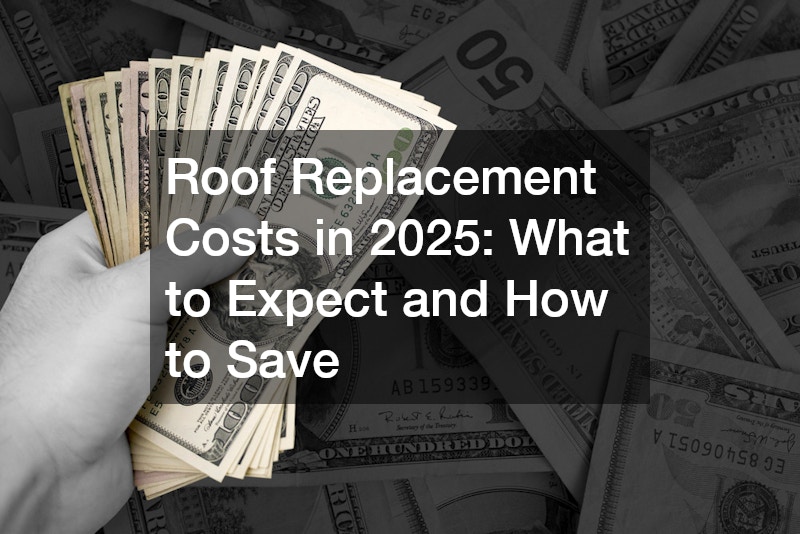

Roof replacement is a significant investment for homeowners where environmental factors demand durable solutions. Navigating the intricacies of roofing options and costs can be daunting, but understanding the average expenses, materials, and maintenance schedules is crucial for making informed decisions. This article will explore the costs associated with roofing replacement, identify ways homeowners can save, examine the most cost-effective materials for 2025, discuss optimal roof replacement intervals, and highlight the advantages of professional services.
What Are the Average Costs for Roof Replacement?
Roof replacement costs can vary significantly based on factors such as the size of the roof, the type of materials used, and the complexity of the installation. For instance, asphalt shingles are often more affordable compared to options like metal, tile, or cedar shakes.
The average cost for replacing a roof typically ranges from $5,000 to $15,000, depending on the aforementioned variables. Labor costs also play a significant role in the overall expenses. Professional roofing contractors typically charge per square foot, and additional elements such as removing the old roof can add to the final bill. Moreover, the urgency of replacement resulting from damage can also affect pricing dynamics, pushing homeowners to prioritize timely action.
Homeowners must also consider potential hidden costs like permits, inspections, and unforeseen structural repairs. Allocating a contingency budget can safeguard against surprise expenditures, ensuring the entire replacement project flows smoothly without undue financial strain.
How Can Homeowners Save on Roof Replacement?
One of the most practical ways to save on roof replacement costs is through comparison shopping and obtaining multiple quotes from local contractors. This approach not only provides a range of pricing options but also allows homeowners to vet the quality and reputation of the service providers. Additionally, leveraging seasonal discounts or promotions offered by roofing companies can significantly reduce expenses.
Exploring different material options with varying price points can also lead to substantial savings. Choosing synthetic alternatives that mimic desired materials could provide aesthetic appeal without the higher cost. Furthermore, maintaining a well-insulated attic reduces heat and moisture build-up, prolonging the lifespan of the roof and deferring replacement needs.
Homeowners may also benefit from programs or incentives that offer tax breaks or rebates for energy-efficient roofing choices. By investing in roofing materials that offer long-term durability and energy savings, it’s possible to offset initial expenditures over time with reduced utility bills and decreased maintenance requirements.
What Types of Roofing Materials Are Most Cost-Effective in 2025?
In 2025, several roofing materials are expected to stand out in terms of cost-effectiveness. One popular choice is metal roofing, which, although initially more expensive than asphalt, offers longevity and energy efficiency that lower its long-term cost. The durability of metal also means fewer replacements and maintenance needs, adding to its overall cost-effectiveness.
Composite shingles, also known as synthetic roofing, blend affordability with resilience. They often mimic higher-end materials like slate or wood shakes but at a fraction of the price, making them a preferred choice among budget-conscious homeowners looking for aesthetic and durable roof replacements in Oakland Park, FL.
Modified bitumen, a type of asphalt roofing with enhanced polymers, is also gaining traction due to its durability and weather resistance. Particularly suited for flat or low-slope roofs, this material provides a wallet-friendly solution without compromising on protection against the elements—vital for regions that experience heavy rainfall.
How Often Should Roofs Be Replaced in Oakland Park, FL?
Most roofing experts suggest that roofs in Oakland Park, FL, should be inspected regularly to determine replacement timelines, which can vary based on material and exposure to environmental stressors. Asphalt shingle roofs, for example, typically last 15 to 20 years, though factors like humidity, storms, and heat can necessitate earlier replacement.
Metal roofs often boast a lifespan of 40 to 70 years, proving their mettle against the region’s climate challenges. Despite this longevity, regular inspections are recommended to catch any potential corrosion or damage early, thus extending the utility of the roof further. In contrast, wood shingles and shakes may require replacement every 20 to 30 years given their susceptibility to moisture.
It’s important to prioritize preventive maintenance and address any minor repairs immediately. Keeping gutters clean, removing debris, and fixing leaks or cracks reduces the frequency of complete replacements, ensuring homeowners maximize their investment over time.
In conclusion, roof replacement is a significant, yet manageable aspect of home maintenance that requires careful consideration of costs, materials, and professional services. Homeowners in Oakland Park, FL, can secure lasting, cost-effective roofing solutions by staying informed about replacement intervals and choosing the right materials and professionals for the job. When done right, a new roof not only enhances a home’s value and curb appeal but also provides peace of mind regarding safety and structural integrity.
.



